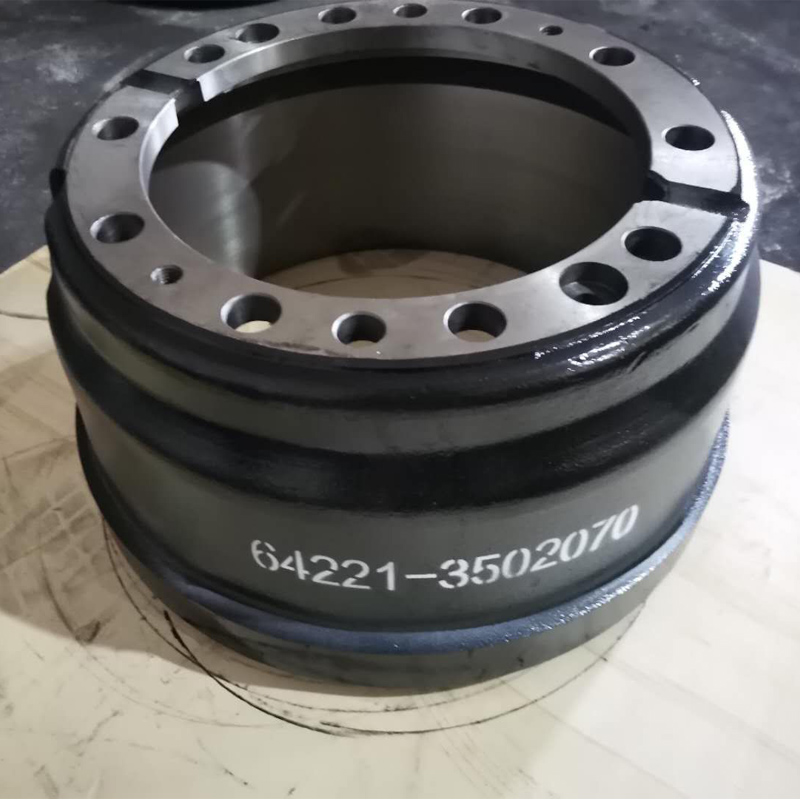Oct . 21, 2024 08:43 Back to list
Complete Brake Drum Set for Reliable Vehicle Stopping Performance and Safety
Understanding Brake Drum Sets A Comprehensive Guide
When it comes to automotive components, few play as crucial a role in vehicle safety and performance as the brake system. Among the essential parts of this system, the brake drum set stands out as a vital component in many vehicles, particularly those with drum brake systems. This article aims to provide a comprehensive understanding of brake drum sets, including their function, components, maintenance, and replacement.
What is a Brake Drum Set?
A brake drum set is a crucial component of a drum brake system, which is one of the two primary types of braking systems found in vehicles, the other being disc brakes. A drum brake works by using friction to slow down or stop a vehicle, which is achieved through the interaction between the brake shoes and the brake drum. The brake drum is a cylindrical component that rotates with the wheel, and when the brake is applied, brake shoes expand outward against the inner surface of the drum, generating the necessary friction.
Components of a Brake Drum Set
A typical brake drum set consists of several key components
1. Brake Drum The main component that encases the brake shoes. It is made from cast iron or aluminum and is designed to withstand high temperatures generated during braking.
2. Brake Shoes These are the friction components that press against the inside of the brake drum. They are usually lined with friction material, which can wear over time and may need to be replaced.
3. Wheel Cylinder This component is responsible for pushing the brake shoes outward against the drum when the brake pedal is pressed. It contains pistons that extend when hydraulic pressure is applied.
4. Return Spring Once the brake pedal is released, the return spring pulls the brake shoes back into their resting position, preventing them from dragging on the drum.
5. Adjuster Mechanism This allows for the automatic adjustment of the brake shoes' position as they wear down, ensuring optimal contact with the drum.
Maintenance of Brake Drum Sets
Maintaining a brake drum set is essential for ensuring the safety and effectiveness of a vehicle's braking system. Regular maintenance checks should include
brake drum set

- Visual Inspection Check for any signs of wear or damage to the brake drum and shoes. Look for deep grooves, cracks, or discoloration, which can indicate overheating.
- Measuring Brake Drum Thickness Over time, the brake drum may wear down. It is essential to measure its thickness to ensure it is within manufacturer specifications. A drum that is too thin may lead to brake failure.
- Cleaning Brake dust can accumulate and affect performance. Regular cleaning of the brake components can help maintain efficiency.
- Checking Wheel Cylinder Inspect the wheel cylinder for leaks or signs of corrosion. A malfunctioning cylinder can result in reduced braking effectiveness.
When to Replace Brake Drum Sets
You should consider replacing your brake drum set under the following conditions
- Excessive Wear If the brake shoes are worn down to the minimum thickness or if the brake drum has deep grooves due to wear.
- Uneven Wear Patterns If the brake shoes wear unevenly, it can cause pulling to one side when braking.
- Brake Fade If you notice a reduction in braking effectiveness, particularly after extended use, this could indicate overheating, necessitating a replacement.
- Vibration or Noise Squealing, grinding, or pulsation felt in the brake pedal can be symptoms of worn-out brake components.
Conclusion
Understanding brake drum sets is essential for anyone looking to maintain their vehicle's safety and performance. By staying educated about the components involved, conducting regular maintenance, and knowing when to replace parts, vehicle owners can ensure their brakes function effectively. Remember, the braking system is not just about stopping a car; it’s about ensuring you and your loved ones arrive safely at your destination. Regular checks and timely replacements can save lives and prevent costly repairs down the road.
-
Your Brake Drum Man: Premium & Reliable Brake Drums for Sale
NewsAug.18,2025
-
ROR Web Development: Build Fast, Scalable, Secure Apps
NewsAug.17,2025
-
Scania Brake Drums: OEM Quality for Optimal Safety & Durability
NewsAug.16,2025
-
R.V.I: Advanced Remote Visual Inspection for Precision
NewsAug.15,2025
-
Discover HYUNDA: Innovative Vehicles, Equipment & Solutions
NewsAug.14,2025
-
R.V.I: Unlock Advanced Insights & Real-time Performance
NewsAug.13,2025
